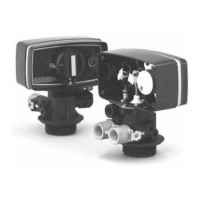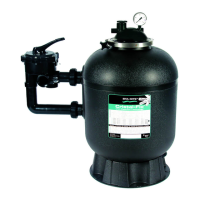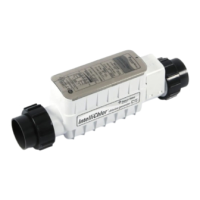Installer Manual Fleck 4600 - MECH - Commissioning
Ref. MKT-IM-027 / B - 01.06.2018 53 / 88
7.2. Sanitization
7.2.1. Disinfection of water softeners
The materials of construction of the modern water softener will not support bacterial growth, nor will
these materials contaminate a water supply. In addition, during normal use, a softener may become
polluted with organic matter, or in some cases with bacteria from the water supply. This may result
in an off-taste or odor in the water.
Thus, your softener may need to be disinfected after installation. Some softeners will require periodic
disinfection during their normal lifetime. Consult your installing dealer for more information on
disinfecting your softener.
Depending on the conditions of use, the softener type, the type of ion exchanger, and the disinfectant
available, a choice can be made among the following methods.
7.2.2. Sodium or calcium hypochlorite
These materials are satisfactory for use with polystyrene resins, synthetic gel zeolite, greensand and
bentonites.
5.25% Sodium hypochlorite
If stronger solutions are used, such as those sold for commercial laundries, adjust the dosage
accordingly.
Dosage
Polystyrene resin: set 1.25 mL fluid per 1 L of resin.
Non-resinous exchangers: set 0.85 mL fluid per 1 L.
Brine tank softeners
Backwash the softener and add the required amount of hypochlorite solution to the well of the brine
tank. The brine tank should have water in it to permit the solution to be carried into the softener.
Proceed with the normal regeneration.

